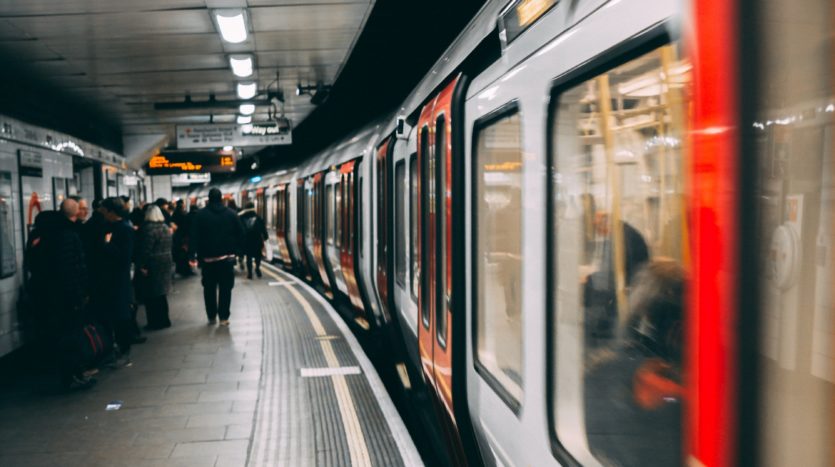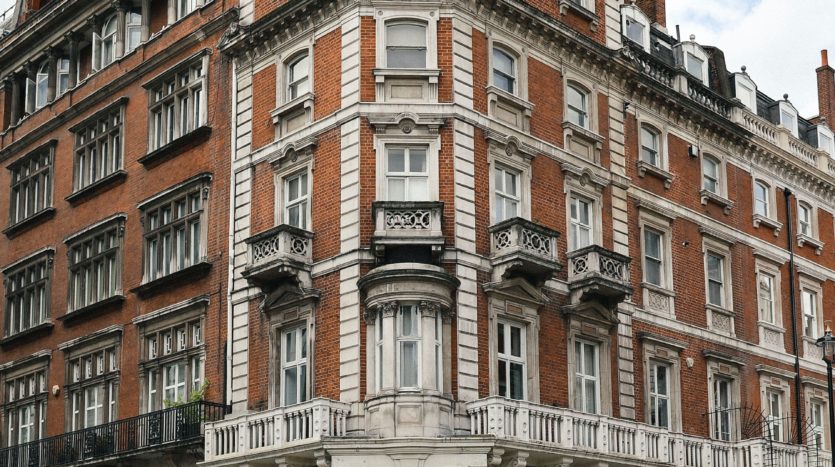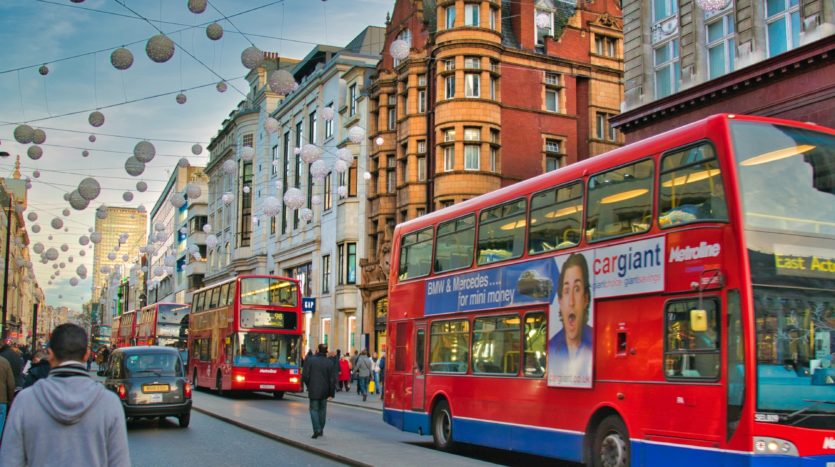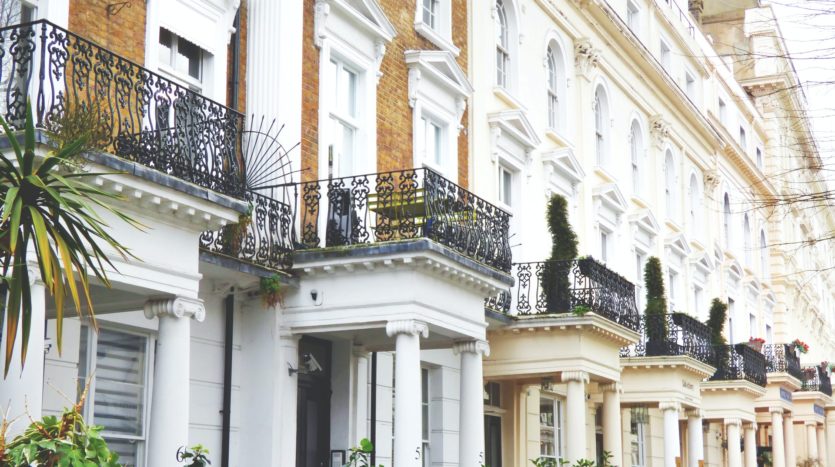London property is known around the world as a great investment, whether it’s for personal use or strictly for income purposes. Even post-Brexit, the wealthiest people in the world are buying and holding property in London. We have prepared a brief guide that details the best areas in London for expats.
Mayfair
Mayfair is one of central London’s most famous districts. A Mayfair postcode is extremely sought after, and has been since well before it was made the most expensive property on the UK Monopoly board in the 1930s. It has a reputation for being an incredibly exclusive district and any property you buy here is likely to be an excellent investment as house prices have been rising dramatically for many years.
Recently, there has been a lot of press coverage surrounding the purchase of property in Mayfair by foreign investors. As is the case with many of London’s more exclusive postcodes, overseas buyers have been investing money into London property to make healthy returns, instead of purchasing residential property to actually live in it. This is a relatively new phenomenon but it does mean that you could be buying or renting a flat in an empty building, or living on a street with few neighbours.
History of the area
The urban area of Mayfair dates back to the late 17th Century, until then it was just a patch of open countryside. A space was needed to house the May Fair which was to move from Haymarket. This is where this affluent district in London gets its name, from a two-week long festival which was held each summer. The May Fair was sanctioned by King James and was a welcome release for many after the Great Plague had devastated much of London’s population.
The term ‘May Fair’ became synonymous with revelry, music, merriment and dancing but it wasn’t until the surrounding areas of Grosvenor Square and Bond Street became busier that Mayfair was developed as a residential district. This delay is probably due to the fact that the River Tyburn flowed through this part of the countryside, turning the area into a swampy, boggy meadow. This didn’t lend itself easily to construction, but once seeds were set and the water subsided, Mayfair began to grow into the commercial and cultural hub that we see it as today.
Property in Mayfair
In September 2014, Mayfair broke records by being the location of flats selling for more than £5,000 per square foot for the first time in London’s history. The penthouse flat, which wasn’t even finished when they negotiated its sale, sold for considerably more than this. The apartments were, of course, decorated and furnished with no expense spared, but their hefty price tag came from their location. Just around the corner from Bond Street, with panoramic views looking out over Buckingham Palace and Green Park, the private residences are unrivalled in their proximity to London’s most exclusive venues. This is just the latest example, but it shows that property prices in Mayfair are continuing to rise dramatically. Any property you purchase in Mayfair will be a significant investment which will continue to rise in value well into the future.
Mayfair is a district which is extremely commercial and nowadays many buildings which were once homes for London’s affluent have since been transformed into designer outlets, car dealerships, company headquarters and international embassies. There is still a reasonable amount of property in Mayfair which is entirely residential and the large number of extremely upmarket restaurants and shopping outlets makes it a very desirable place to live. But the ratio between the number of commercial properties and the number of residential properties in Mayfair might be shifting.
There is evidence to suggest that the residential property sector is the way forward in Mayfair. With records constantly being broken for the most expensive residential properties in the entirety of the capital, developers are seizing this opportunity and commercial properties are being revived to their former state as houses and apartments. Companies are releasing the capital invested in their headquarters and moving to less exclusive, less expensive areas, making way for the construction and development of more homes in Mayfair.
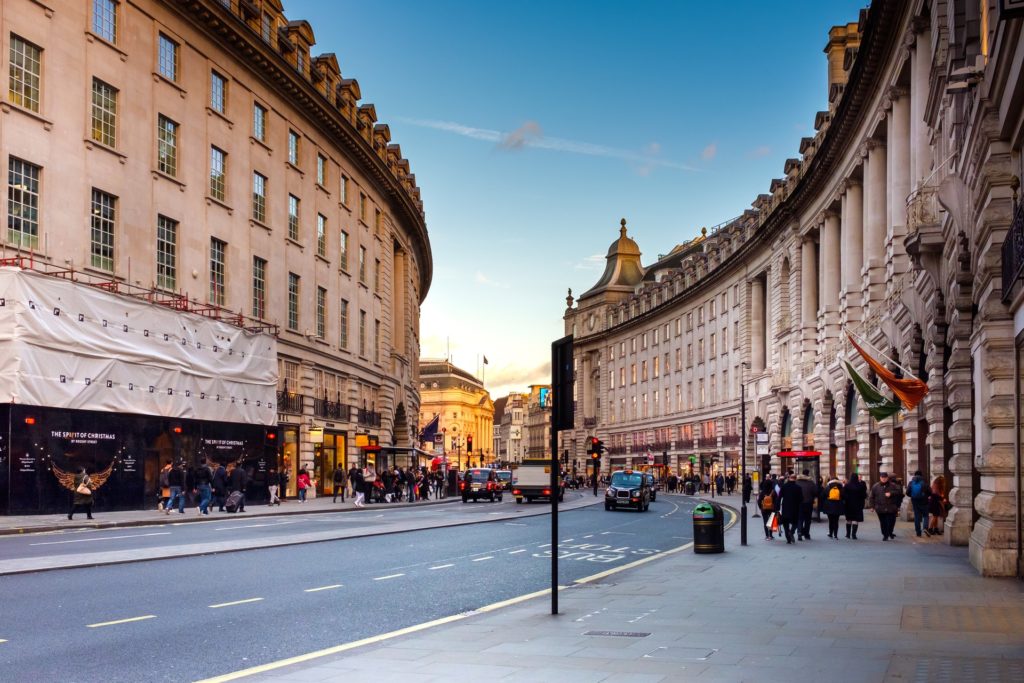
Types of Property In Mayfair
At the highest end of the property spectrum, Mayfair has all of the variety you could possibly ask for when it comes to residential properties. You are unlikely to find a bargain, but you get what you pay for in terms of a convenient city centre location, the highest quality of house or apartment, top-end restaurants and retail outlets on your doorstep and a property which is likely to keep rising in value well into the future.
Much of Mayfair’s residential property consists of terraced mansion houses which have either been completely refurbished as 8 – 10 bedroom properties or have been split up into smaller flats and apartments. This type of property smoothly combines Mayfair’s historic architecture with modern luxuries, giving you that perfect compromise between comfort and style.
If you are looking for a modern, state-of-the-art flat in central London then Mayfair can easily cater for that. There are plenty of contemporary, purpose-built apartments which are equipped to the highest standard. All of these buildings have the highest security measures in place to protect you, your family and your possessions and many have gated entrances and secure car parks.
But if this isn’t quite what you’re after then there are also a range of newly constructed freehold houses which all cater for upwards of 5 bedrooms. These properties have less of the historical charm associated with them but do offer the latest technologies and easily provide all of the comforts we have grown to expect in the 21st Century. Many also have gated private parking for residents, as well as indoor heated swimming pools and even exclusive rooftop terraces.
Mayfair is the area of London with the highest number of five star hotels so living here means being surrounding by affluence and luxury, and the property prices reflect this. Renting a property in Mayfair will mean paying some of the highest prices in the whole of London, but this is unsurprising given the surroundings. Mayfair has the highest concentration of Michelin starred restaurants in the capital and is also home to the US Embassy and the Royal Academy of Arts.
Lifestyle in Mayfair
Luxury comes with the territory so everything in Mayfair comes with a hefty price tag. Whether you are heading out to dinner, buying a new suit or renting a new flat, you won’t find anything less than the best, and the best doesn’t come cheap.
Shopping
The Burlington Arcade is a premier shopping district within Mayfair. Its famous promenade, with its iconic glass roof, has been an exclusive place to shop for nearly 200 years. It houses over 70 different outlets from designer clothing shops to fine jewellers and watchmakers.
The world-class shopping opportunities don’t end there. Mayfair is the location of some of the most exclusive auction houses in the world. Christie’s is probably the most famous example, having been responsible for the sales of a record-breaking Stradivarius violin called ‘The Hammer’; many paintings by the biggest names in the art world such as Gustav Klimt; exclusive fashion collections from the top designers and even the black dress which Audrey Hepburn wore in ‘Breakfast at Tiffany’s’.
Things to do
Art Galleries
The galleries in Mayfair are by far the best value entertainment in the area, and that’s because most of them are free. The Royal Academy of Arts is an artist-led gallery which aims to promote the practice of art as well as its appreciation. There are usually a combination of longer-term and temporary exhibitions at any one time, some of which will charge an entrance fee to help towards the running costs of the gallery and the academy.
Handel House Museum
Mayfair was home to George Frideric Handel for 36 years and his house on Brook Street was where he composed his most famous and impressive works, including the Messiah and his music for the Royal Fireworks. The house is now a museum which has been preserved as an exhibition dedicated to his life and work. Handel House is also a prime performance space, with a composer in residence and concerts held every single week.
Transport
Mayfair is in a prime central London location. It is extremely well-connected to the rest of the city, bordering Soho, Marylebone, Fitzrovia, Chinatown, Knightsbridge and Paddington. It is just a stone’s throw from Hyde Park, an oasis of green and tranquil space within the bustling heart of London.
Unfortunately, there aren’t any tube stations which are located within Mayfair itself. This does mean, though, that there is a significantly lower amount of commuter foot-traffic to congest the streets in the mornings as there is less of a mass rush towards the same station in time to get to work. Just because there isn’t a station actually within Mayfair doesn’t mean that it isn’t reasonably accessible by the London Underground network. There are tube stations dotted along the boundary of Mayfair, with Hyde Park Corner, Green Park, Piccadilly Circus, Oxford Circus, Marble Arch and Bond Street all within walking distance of all of Mayfair. This means that the Bakerloo, Victoria, Piccadilly, Jubilee and Central lines all have stations on the border of Mayfair, making it extremely easy to access all of London.
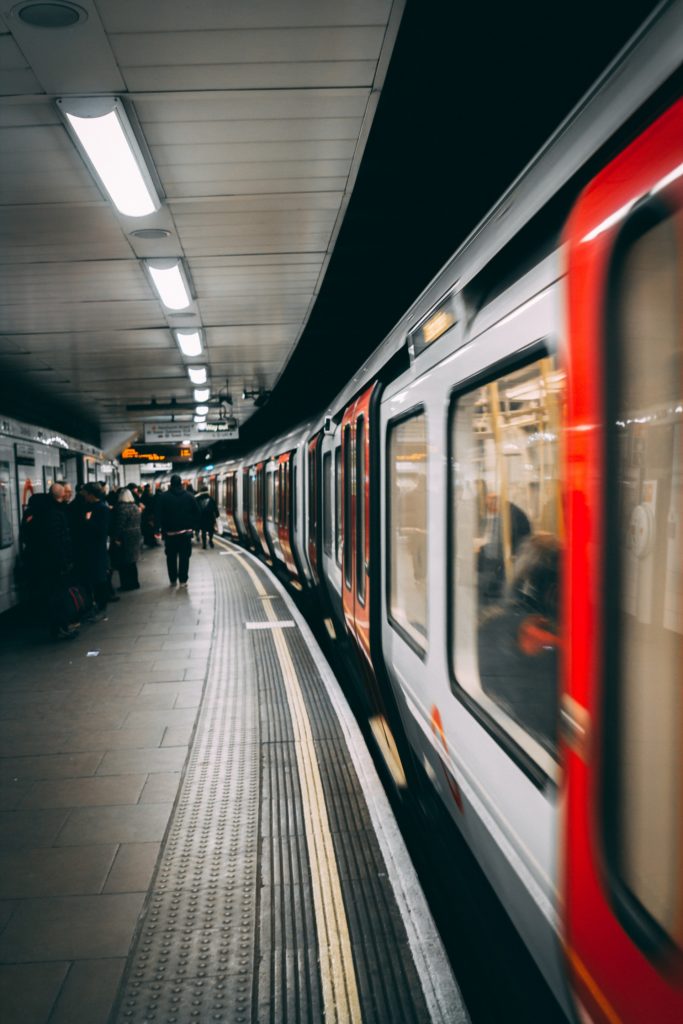
Marylebone
Marylebone is a fairly affluent area in central London. It is bordered by Oxford Street, Edgware Road and Great Portland Street, giving it an excellent location in terms of accessibility to some of London’s busiest commercial districts. The traditional definition of Marylebone does not pass these boundaries; however, the name Marylebone Village has been used to describe the surrounding area, encompassing Regent’s Park, Baker Street, Marylebone Station and Dorset Square. The term ‘village’ is very fitting for Marylebone as it is one of the very few places in central London where living in a capital city can have a village-like feel to it. This more relaxed feel is one of the reasons why more and more buyers are looking to settle down here.
History of the area
The name Marylebone derives from the name of a church which was dedicated to St Mary. A church built in 1817 still stands here today and is now known as St Marylebone Parish Church. When the original church was built, it was constructed on the banks of the Tybourne. The church was a distinguishing landmark and was known in the area of St Mary at the Bourne. Over time this was condensed to Marylebone and the name is still recognisable today.
In the mid to late 18th century, much of Marylebone belonged to a small group of landed families. Since then, the area has attracted wealthy residents to build and buy homes in the area and it remains a prize location to own residential property in London.
Property in Marylebone
Marylebone is an incredibly sought after location for residential property. With such easy and direct access to all of central London, and with such a wide range of entertainment on offer, it is not difficult to see why. A study into the house prices in central London found that between June 2005 and June 2011, residential property prices in Marylebone rose by 107%. Houses in the same district have also seen increases over the last 4 years and are continuing to provide excellent investments for their owners. Although the property in Marylebone still carries London price tags, it is not quite as exclusive here as some other parts of London, and if you are looking for something smaller and less grand, without leaving the centre of the city, you may just find what you are looking for in Marylebone.
At the other end of the scale, you will find some of the finest period architecture in the whole city in Marylebone. Picture the white, Georgian, terraced houses along Regent Street and you will get an idea of what this area has to offer if you are willing and able to pay for it. Marylebone is a beautiful place in which to buy property. The large, open streets like Portland Place and Devonshire Street with their tall Georgian houses look like something from a film, rather than property catalogues. There are a variety of mansion houses from different periods and this area of London boasts some of the most well-preserved Georgian, Victorian and Edwardian buildings in the whole of the capital.
Types of Property In Marylebone
There are quite a large number of studio flats available to buy or rent in Marylebone. This could be perfect for young professionals looking to get their foot on the property ladder. As with all affluent areas in London, house prices in Marylebone have seen a huge increase in the last few years. The difference with Marylebone is that you can still get hold of much smaller properties which will cost you less to rent or buy. In other well-to-do areas you can only really get your hands on much larger, and therefore more expensive, residential properties. Marylebone’s host of tube stations means that these flats are just minutes away from transport links. Many apartments in the area have been refurbished in the last 10 years, so won’t be in much need of renovation or repair.
If you are looking for something a bit larger then you will find that prices start to rise dramatically, but it is important to remember that you are not just paying for the property itself but for the central London postcode as well. There are a number of different options when it comes to looking at 2 – 4 bedroom properties in Marylebone.
If you are happy buying or renting a flat then you are likely to get a bit more for your money. You will have the choice between modern, purpose built blocks which often benefit from having porter services on the ground floor and lifts to reach the higher levels. If you are looking for something with a bit more character then the terraced town houses provide the perfect combination between Marylebone’s history and its current appeal.
If you are looking for something a little more sheltered, you could look to the many different mews offering a different type of residential property in Marylebone. These houses are set back from the main streets so have less of a city centre feel to them. If you want the benefits of an excellent urban location, but without the noise and constant traffic outside your front door, then choosing a property in the mews in Marylebone might be the best option. The gated gardens also give a little slice of privacy in the capital as many are only accessible to local residents.
Lifestyle in Marylebone
Marylebone is one of London’s most diverse districts when it comes to fashion and entertainment. It is a hotspot for independent businesses, whether it’s the latest indie tea house or a new Michelin star restaurant. This area caters for everyone, with a wide range of restaurants from quick and easy fast food outlets to the highest of haute cuisine. There are plenty of historic pubs as well as modern bars, so wherever you feel most at home when having a drink, you’ll find it in Marylebone.
Shopping
As Oxford Street forms Marylebone’s southern border, shopping is one of its main attractions. Visitors from all over the world flock to Oxford Street in their thousands to make the most of the range of different retail outlets on offer. There is a huge variety of different retailers in the area to suit all tastes and budgets. The shopping opportunities range from budget high street chains to much more exclusive, independent retailers.
If you are feeling adventurous enough to deviate from the norm and explore Marylebone’s side streets, you will find a whole host of independent boutiques, highly specialised stores selling completely unique products and extremely upmarket high-end designers. There is definitely something for everyone when it comes to shopping in Marylebone and you can certainly expect some surprises along the way.
Things to do in Marylebone
Sherlock Holmes’ Museum
Although he is only a fictional creation, Sherlock Holmes is probably Marylebone’s most famous resident. The museum is unfortunately housed at 239 Baker Street, as 221B is another figment of Sir Arthur Conan Doyle’s imagination, but you can still visit a house which has been lovingly decorated and furnished to look just like the 221B in the books. You will be able to look through letters sent from fans from almost every country in the world, as well as seeing some of the original drafts of the stories and some of the objects from which Sir Arthur Conan Doyle took his inspiration.
Madame Tussauds
Almost every day of the week you will see a long queue of excited visitors standing outside this building with its iconic green dome. They will all be eagerly waiting to have their photos taken with the rich and famous. The collection now houses more than 300 life-like recreations of TV personalities, footballers, members of the royal family, Olympic athletes, Hollywood film stars and many more.
Regent’s Park
Regent’s Park also falls into the area of Marylebone Village and offers a tranquil and serene space which makes a welcome change from the noise and chaos of the city centre. The park spans a total of 410 acres and is a popular running spot and relaxing destination for summer picnics. The lake is a prime spot for watching herons and waterfowl and there is a boating area and several playgrounds which provide great entertainment for the children. The northern part of the park is the home of London Zoo which is a favourite of tourists and locals alike.
Transport
There is no shortage of tube stations in Marylebone. It is therefore extremely accessible from the rest of the Capital. The London Underground network can be accessed in Marylebone from Baker Street, Bond Street, Edgware Road, Marble Arch, Marylebone, Oxford Circus and Regent’s Park stations. From this range of stations you will have direct access to the Bakerloo, Victoria, Central, Circle, District and Hammersmith & City lines, without having to leave Marylebone.
Marylebone train station also provides access to national rail services. It the newest of London’s national rail stations, having been opened in 1899, and it is by no means London’s largest train station, but it does offer many services to the Midlands. All Chiltern railways services between Birmingham and London use London Marylebone as their terminus.
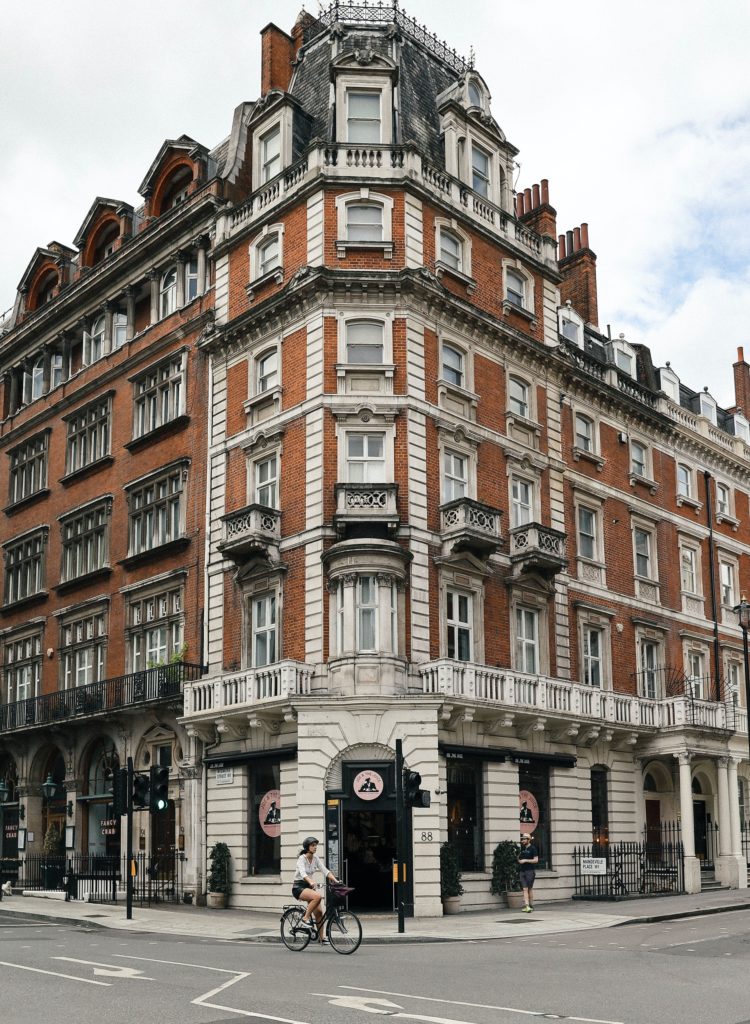
Fitzrovia
Fitzrovia is an area in central London which is partly located in the Borough of Camden and partly in the West End. It has a distinctly bohemian reputation and is often described as an urban village due to the less hectic pace of life which is adopted by many of its residents. There is a huge variety of residential and commercial property on offer but the residential property market in this area has recently taken off and house prices keep rising. Fitzrovia has become a very desirable location for living in London, so buying property here can be seen as a fantastic investment.
History of the area
Fitzrovia is an area of London located near the West End and it has its own rich cultural history. There are various ideas about where the name Fitzrovia came from, but it is widely accepted to have been named after a pub called the Fitzroy Tavern. Fitzrovia was first recorded as being a name for the area in an edition of The Daily Express printed in 1940. If you take just a short walk around the neighbourhood you will see little blue plaques everywhere pinpointing the homes of the cultural elite.
Amongst those who have once lived in Fitzrovia are writers such as George Orwell, George Bernard Shaw, Virginia Woolf and Arthur Rimbaud. Despite going on to become extremely well-credited authors, these 4 are typical of the intellectual underclass who flocked to Fitzrovia in the first half of the twentieth century and gave the district a less-than respectable status. These ‘bawdy’ intellectuals were looked down on by the London elite, so Fitzrovia never developed quite the same affluent and upper-class reputation as some of the other parts of central London.
This reputation, however, is no longer quite the case. Fitzrovia has become a much more sought after area and you are now much more likely to see a property investor walking down the street than a penniless author coming home from the pub.
Property in Fitzrovia
Fitzrovia has become one of the most desirable residential property locations in the whole of London. Investors and homemakers have been steadily buying property at increasing rates over the last decade or so and prices are rapidly on the rise. Carter Jonas has released a report which predicts a 70% rise in house prices in Fitzrovia before the Crossrail station opens at Tottenham Court Road in 2018.
The Fitzrovia property conversion which has attracted the most media coverage in recent years has to be the site which used to be home to the old Middlesex Hospital. The old building has now been demolished to make way for a development of 235 state-of-the-art apartments called Fitzroy Place. Although for several years there were issues with successive companies running out of funds to complete the project, most of the flats have now been completed and many have been sold. In the few years that it has taken to finish off the apartments, buyers who got in there early have already made a profit. When they were first sold, the apartments were going for £1,500 per square foot; just a few years later they were fetching more than £2,000 a square foot. This is just one example of how the property market in Fitzrovia is moving forwards and looking to catch up with other affluent areas like Mayfair and Marylebone.
Types of Property In Fitzrovia
Although Fitzrovia is on the way up in the property world, not all of the buildings are luxury apartments or converted mansions. There is still a considerable amount of property in Fitzrovia which is dedicated to social housing; there are a large number of students living in halls of residence in the area and there are a vast number of more ‘modest’ homes behind some of the more impressive buildings. However, as rent prices in Ftizrovia continue to rise incredibly quickly and steeply, many of these other residents are being priced out of their homes, gradually turning the bohemian urban village into a more exclusive property hotspot.
There is certainly a mixture of different properties for sale and for rent in Fitzrovia. If you are looking for a flashy modern apartment with all the furnishings and trimmings to match then you should look at one of the newer developments. There are many other buildings like Fitzroy Place, although none of them on quite the same scale, which offer newly-built flats and apartments in the heart of an area with cultural and historic significance. Many office blocks have been converted into stylish homes as residential property has started to become more valuable than commercial property in the area.
A few years ago, you would have found that the majority of homes on sale in Fitzrovia were located in Victorian tenement buildings. If you are looking for something with a little more character than a converted office block then this might be the sort of property that you are after. There are still quite a number of them around, but they have now definitely become outnumbered by the vast number of new-build flats which have arisen in the last few years.
If you walk down the streets between Great Portland Place and Cleveland Street, you will find that most of the properties date from the Edwardian period. This particular part of Fitzrovia used to be the centre of the fashion industry. You will still see a few independent tailors with their shops in this area but most of the industry has moved elsewhere, leaving way to redevelop these commercial properties into modern homes, converted flats and mansion houses.
Lifestyle in Fitzrovia
Shopping
Fitzrovia doesn’t attract a huge amount of visitors based on the shops it has to offer. It is still an area which is relatively sheltered from the constant waves of tourists from around the globe who flock to London to make the most of the huge range of retail opportunities in the capital. With Oxford Street just around the corner, Fitzrovia is often overshadowed. This doesn’t mean that there aren’t any shops in Fitzrovia. Far from it! Just as you would expect from a district with such a rich history of bohemian culture, Fitzrovia is home to a vast collection of small, independent and specialised shops where you could happily while away hours browsing an array of different items on display. Don’t expect to see the biggest names in designer fashion or to have all of the high street retailers on one road, but do expect a huge range in what’s on offer with items to suit a whole variety of different tastes and budgets.
Things to Do and See
Fitzrovia has been known as a bohemian district ever since the mid-1920s and countless authors, poets, musicians, songwriters and artists have spent time living in the area. It is therefore unsurprising that the arts are still very well represented in Fitzrovia with theatres and galleries scattered throughout. On Thursday nights, all of the galleries in Ftizrovia stay open until at least 9pm and usually provide spaces for live performances and artist discussions. This is just one of the ways in which Fitzrovia continues to endorse the arts and make them accessible to all.
BT Tower
The BT Tower is one of the iconic features of London’s skyline. Including the mast on top, the tower measures an impressive 188m tall. It was constructed in 1964 and has featured in dozens of films, TV shows and books as one of London’s most recognisable landmarks. The inside of the tower is now closed to the public and the revolving restaurant at the top is only opened for very special occasions.
Pollock’s Toy Museum
Pollock’s old toyshop and museum is a surviving piece of London’s history. It is a treasure trove of collectibles both on display to the public and for sale in the shop downstairs. The museum is by no means run at the same international level as many of the others in London but its quaint collection is perfectly preserved and perfectly embodies the character of Fitzrovia.
Transport
Fitzrovia is located right in the heart of central London, and many of the city’s great attractions, such as Covent Garden and the West End are within walking distance. If you are looking to travel further afield, the district is also extremely well connected by tube. With 6 tube stations within easy reach, Fitzrovia is easily accessible by the London Underground network. Goodge Street, Warren Street, Great Portland Street, Regent’s Park, Euston Square and Tottenham Court Road are all either in Fitzrovia or just on the border.
There are no national railway stations within the borders of Fitzrovia, but Euston is just on the border and is easily reachable from the whole district. Euston station provides high-speed train connections between London and the North of England and Scotland, with direct services to Birmingham, Liverpool, Manchester and Glasgow amongst many others.
When crossrail comes to Tottenham Court Road, Fitzrovia will be in a prime location to access it directly. This is one of the factors pushing housing prices up steadily in Fitzrovia and once the project is finished, properties in the area will be in even higher demand.
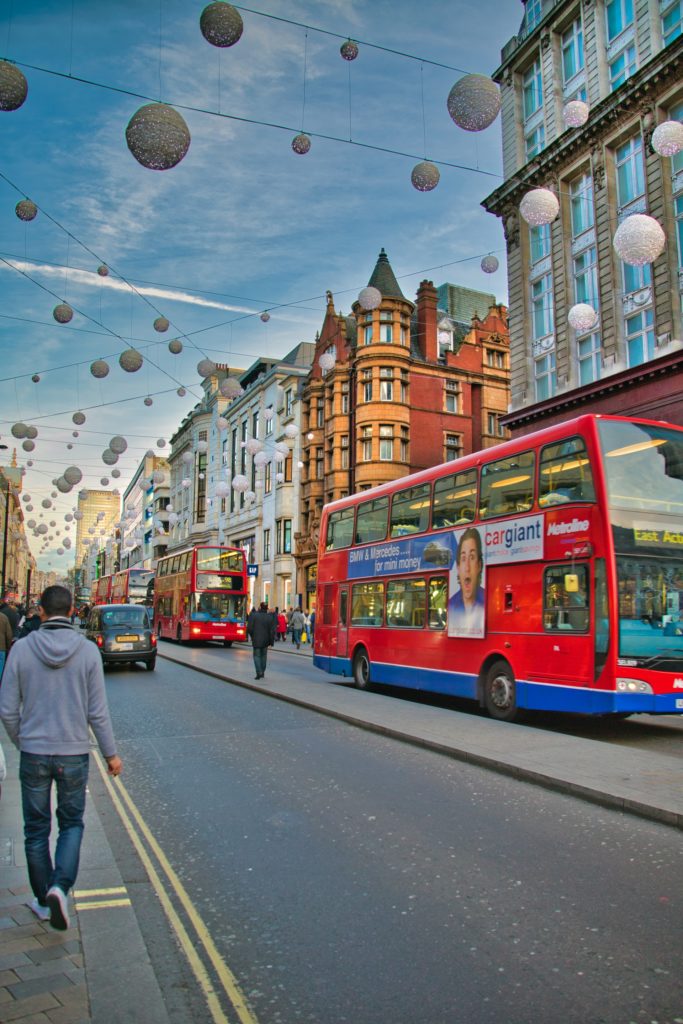
SoHo
Soho is the area of London which falls between Charing Cross Road, Oxford Street, Regent Street and Shaftesbury Avenue. It has an unrivaled location right in the centre of London’s commercial heart. Soho is London’s infamous entertainment district, having been known for most of the last century as the central hub of London’s sex industry and a magnet for disreputable sorts. It was known for its exotic and varied nightlife and for being of huge cultural importance in terms of being the home of many up-and-coming authors, poets and musicians before they made a name for themselves. From 1980 onwards, Soho has worked on dramatically changing its reputation. It has transformed, becoming almost the opposite of its former self and attracting a huge number of young professionals due to its proximity to London’s commercial offices as well as being a fun and vibrant community to be a part of.
History of the area
Soho was an area of agricultural land until the 1530s when it was turned into a royal park by Henry VIII as part of the grounds of the Palace of Whitehall. The land was subsequently leased out over various generations and permission was granted to build on the land in the 1670s. Once built, Soho became extremely popular with French immigrants, to the extent that the area was dubbed ‘London’s French Quarter’ for a while.
It started to lose its appeal for the rich and famous so London’s aristocratic population began to move elsewhere throughout the first part of the 18th century. This exodus of the well-to-do left Soho in a vulnerable position and quickly gained its reputation as London’s sex district. This reputation was immortalised in various works of art and literature, most famously in Robert Louis Stevenson’s ‘Dr Jekyll and Mr Hyde’. Mr Hyde became the stereotype of the man who used to frequent Soho clubs. The area took on a more bohemian feel in the 20th Century, attracting a wide number of authors, poets, artists and musicians to its pubs and bars but didn’t manage to change its reputation until the 1980s when Soho was radically transformed into the neighbourhood that it is today.
Property in Soho
Soho is a young and vibrant neighbourhood. Property prices have been rising steadily over the last few years, as they have in all of central London’s districts. What sets Soho apart is that it is dominated by young professionals, so there are fewer larger properties and houses tend to be converted into flats to cater for this sector. Although prices have been increasing in line with other districts in London, rent and property prices remain about 5% lower in Soho than they are in other neighbourhoods in central London. This may not seem like a huge saving but it could amount to a considerable sum over the course of a few years.
Types of Property In SoHo
Soho is a relatively small neighbourhood and therefore doesn’t have quite the same range of different property types as some of London’s other districts. It is an area which is very popular with young professionals, so much of Soho’s residential property is geared towards their needs and lifestyle. There are lots of smaller apartments and studio flats which are more affordable than the larger town houses. There are also a vast number of properties for rent rather than for sale, although Soho does have a large number of owner occupiers when you compare it to other districts in London.
Most of the properties for sale and rent in Soho are one- and two-bedroom flats and apartments and prices start from around £1,500 per square foot. Top floor flats are extremely popular in Soho and you will find that many of them have been converted to come with roof terraces looking out over London. These flats are obviously priced much higher than apartments lower down in the building but they come with fantastic views and essentially an extra room.
A new development in Broadwick Street provides 13 penthouse apartments and 65 homes at more affordable prices than you would find in other areas of central London. This development is also creating more retail space and commercial property to further enhance the area. The whole development is being built where there used to be a police section house, so if you are looking for new-build property but with a backstory and a bit of character, it may be worth looking into the Broadwick Street development.
Although you are less likely to find a large terraced house for sale in Soho, or a property geared up to make a nice family home, the choice on offer when it comes to apartments is staggering. There are a collection of brand new developments all built in different styles; art deco converted office blocks; small studio flats above shops; converted Queen Anne houses; larger properties which used to belong to the local authority and refurbished period loft apartments. Whatever character you are looking for from a flat you are almost guaranteed to find it in Soho.
Lifestyle in Soho
Life in Soho is exciting, dynamic and far from boring. It is fast-paced and there is always something new to look at and somewhere new to go. Despite being a small neighbourhood it is incredibly diverse in terms of cultures and the opportunities it offers its residents. Soho is definitely an area which is better suited to the life of a young professional as there are very few family-friendly facilities in the area and the streets tend to be lively and busy at all times of day and night. This makes it an incredibly fast-paced and exciting place to live. It is extremely multicultural and diverse; you will meet people from all over the world and people of all ages and walks of life. If you are looking to be at the heart of a dynamic neighbourhood right in the centre of the capital then you’ll fit right in in Soho.
Shopping
Soho is home to some of London’s most famous and exclusive stores. Hamleys, London’s world-famous toy shop is located in the heart of Soho, as is Liberty, one of London’s most celebrated department stores. If you choose to wander along some of the backstreets in Soho, you will be greeted with the trademark colourful shop fronts which line the streets. There are pavement cafés and quaint boutique stores which couldn’t be more different from the nearby mainstream hustle of Oxford Street.
Soho is also home to one of the oldest markets that London has to offer. Berwick Street Market has always been synonymous with the fashion industry and even today you will still be able to pick up a bargain when it comes to sourcing unusual fabrics and haberdashery supplies.
Things to Do and See
Theatre
There are lots of smaller theatres within Soho which attract international audiences. The plays on offer change on a fairly regular basis so there will always be something new to go and watch. Soho is also within easy reach of London’s West End where some of the best theatre performances in the world are put on every single night.
Ronnie Scott’s
Ronnie Scott’s is one of the world’s oldest jazz clubs. It has been open since 1959 and has hosted all of the biggest names in modern jazz. Everyone who is anyone in the world of jazz has played here at some point in their career. Downstairs is a live jazz venue where you have to book tickets well in advance to guarantee entry. Upstairs is a bar which transports visitors back to the 1950s speakeasy. You don’t need a ticket to get in here but there is often a queue at the weekends.
Gay clubs
Soho is the heart of London’s gay scene. It has a huge variety of gay bars and clubs and acts as the centre for all Gay Pride celebrations held in London each year.
Transport
The tube stations Oxford Circus, Piccadilly Circus, Tottenham Court Road, Leicester Square and Covent Garden are all within walking distance of all parts of Soho, making it extremely accessible from the whole of the capital. From these stations, residents will have direct access to the Bakerloo, Central, Piccadilly, Northern and Victoria lines.
In the mid-1990s Westminster Council experimented by pedestrianizing some of the streets in Soho, to try to deal with the problem of crowded pavements. Most of this was revoked as some local shops, cafés and bars complained that they had lost trade with the lack of vehicle access. This means that you can now travel through most of Soho by taxi and car, although parking is extremely restricted so unless you rent or buy a property with a parking space, you will not realistically be able to keep a car in Soho.
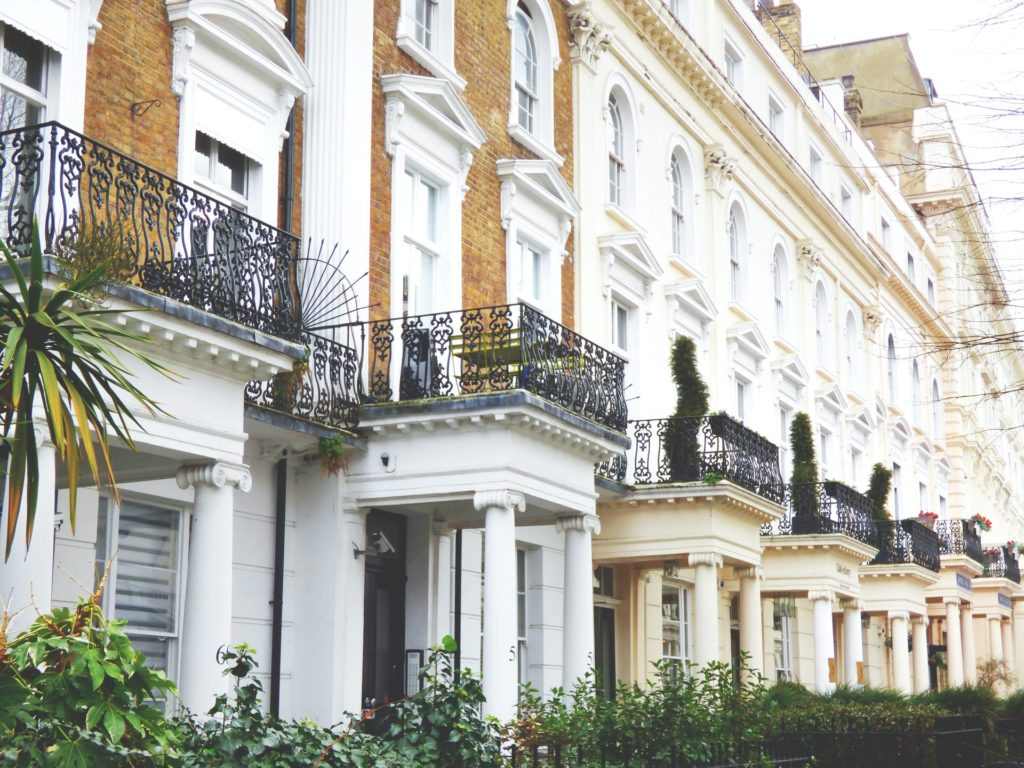
St John’s Wood
St John’s Wood is a district in central London. It is in a fantastic location, just two stops on the tube or a quick walk through Regent’s Park and you will find yourself in the heart of the West End. Despite its central location, St John’s Wood is a very relaxed area to live in, it is much quieter and more peaceful than other parts of the city centre, yet it is still extremely close to all of central London’s commercial and business districts. With this in mind, it is not difficult to see why St John’s Wood is quickly becoming one of the most sought after postcodes in London for raising a family.
There is a wide range of different people who have started flocking to St John’s Wood to make the most of all it has to offer in terms of property and location. Young professionals love being right at the heart of London’s cultural centre and the possibility to upsize in the same area to make room for new families is another huge attraction. St John’s Wood is also home to three of London’s top private universities which attracts a young and international crowd keeping the area lively and animated.
History of the Area
St John’s Wood used to be part of the Great Middlesex Forest. It was then in the possession of the Knights of St John of Jerusalem and this is where it gets its name. It has had an interesting history, always having had a reasonable reputation as an affluent area. It was though, at one point, the preferred place for gentlemen in the Victorian era to keep a mistress. Since the district was far enough away from where the gentleman would be living with their families in Knightsbridge and Mayfair, and at the same time close to the city centre, it was seen as the perfect place to have another woman waiting.
Property overview in St. John’s Wood
St John’s wood is an extremely affluent area. In 2007, its postcode was found in a study by Forbes magazine to be the 5th most expensive in London in terms of average property prices. Other studies have been conducted by different magazines and estate agents which conclude that people living in St John’s Wood pay the highest rent prices in the whole of London.
In the last 2 or 3 years, residential property prices in St John’s Wood have skyrocketed to price the vast majority of buyers well out of the market. There was a point at which there were over 10 mansion villas for sale on Avenue Road, each of which was asking in excess of £15 million. The most expensive mansion on that road eventually sold for £65 million. St John’s Wood does have an excellent location and a very family-friendly vibe. It is a peaceful bubble in the chaos of the capital city but if you want to live here then it will cost you a lot of money, regardless of what type of property you are looking to buy.
Types of Property in St. John’s Wood
The most iconic buildings for sale in St John’s Wood are the white stucco terraced houses which can be seen all over the area. Some of these houses have been converted into flats to appeal to young professionals but most remain as large villas. These rows of white houses have given St John’s Wood its distinctive character and exclusive reputation. Aside from these Victorian terraces, you will also find large early-Victorian detached and semi-detached houses, 1920s mansions and the occasional Victorian Gothic house.
Flats tend to come in very exclusive blocks which have gated entrances and 24 hour porters on hand. There isn’t the same eclectic range that you might find in other central London neighbourhoods; instead, everything here screams luxury and style. There are several new developments such as modern purpose-built apartment blocks which have aimed to bring a few more smaller properties to the market in the area. There is also a project underway to renovate the old barracks in St. John’s Wood and turn them into a combination of brand new apartments, office space and retail outlets.
Some of the most sought after properties in the whole of London can be found in St John’s Wood, and streets such as Cavendish Close, Acacia Place, Norfolk Road, St James’s Terrace and Melina Place are all home to huge Victorian houses which won’t sell for anything less than £25 million. These roads tend to be set back from the main streets and are quieter than some of the other locations in St John’s Wood; this is why they are priced much higher than some others.
There is no ‘cheap’ property in St John’s Wood, it is an extremely exclusive and affluent area, but you may find that looking for property on Casey Close, Jerome Crescent, Rowley Way, Salisbury Street and Capland Street will turn up some homes listed for slightly lower prices. These locations are closer to the main thoroughfare through St John’s Wood and so will be a bit noisier and less intimate than some of the more expensive and exclusive streets.
Lifestyle
St John’s Wood is a very multicultural area of London so you will see a huge array of people enjoying what the district has to offer. It has a relaxed atmosphere and life here runs at a much slower pace than in some of the other central districts. There are lots of families who live in the area so there are a lot of facilities to entertain young children. If you are looking for a peaceful and tranquil lifestyle without compromising on city centre location then St. John’s Wood is probably the neighbourhood for you.
Shopping
Shopping isn’t by any means world class in St. John’s Wood but living here will give you access to a wide range of independent boutiques to browse along the High Street. It is a great place to pick up a small gift with all sorts of specialist jewellers, unique fashion retailers and small private art galleries. There is also a wide variety of places to eat in St. John’s Wood. The multicultural nature of the district means that you can enjoy a wide range of different cuisines prepared to the highest standard. St John’s Wood has recently become a more popular shopping destination as, unusually for central London, the High Street has pay and display parking making it easy to just pop in for an hour or so.
Things to do
Regent’s Park
Regent’s Park forms one of the borders of St John’s Wood. It is a 410 acre expanse of green parkland which includes beautiful rose gardens, an extensive sports area (the largest outdoor area for sports in the whole of central London) and of course, London Zoo. There is also an ornamental lake where you can hire rowing boats. The proximity to Regent’s Park is one of the reasons why St. John’s Wood has become an extremely popular location for family homes. There are countless opportunities to entertain children in Regent’s Park in all seasons.
Primrose Hill
Take a stroll through Regent’s Park and up Primrose Hill on a nice clear and sunny day to be treated to dramatic and impressive views over London. It has been a popular picnic spot for the last 150 years because of the unusual opportunity it gives visitors to look out across London whilst enjoying being outside in the fresh air.
Lord’s Cricket Ground
Having a world-class sporting venue on your doorstep is a major attraction for all cricket fans. This is where the ashes are housed when they are in English possession. You can take a tour around the MCC Museum and the stadium itself, as well as getting tickets to watch the various national and international matches which are played here.
Abbey Road
Probably the most famous street crossing in the world is located in St. John’s Wood. Traffic is held up every single day of the year by Beatles fans waiting to cross in the footsteps of their idols. There are always people posing and taking pictures on this iconic symbol of British popular culture and to recreated that famous 1969 album cover. A webcam has also now been installed so that you can tune in to watch the fans delighting in the moment from the comfort of your very own home.
Transport
St John’s Wood is extremely accessible by tube as there are 5 different London Underground stations located either within the district or just a short walk away. St John’s Wood, Swiss Cottage, Marylebone, Baker Street and Warwick Avenue are all easily accessible on foot from St. John’s Wood. They give residents direct access to the Jubilee, Bakerloo, Hammersmith & City, Metropolitan and Circle Lines. South Hampstead is also just a short walk away and provides a direct link to the London Overground train service.
Marylebone Station is the closest national rail link to St. John’s Wood and can either be accessed on foot from most parts of the district or by bus or tube if you live on the opposite side of the neighbourhood.
To search London property for sale, click here.



